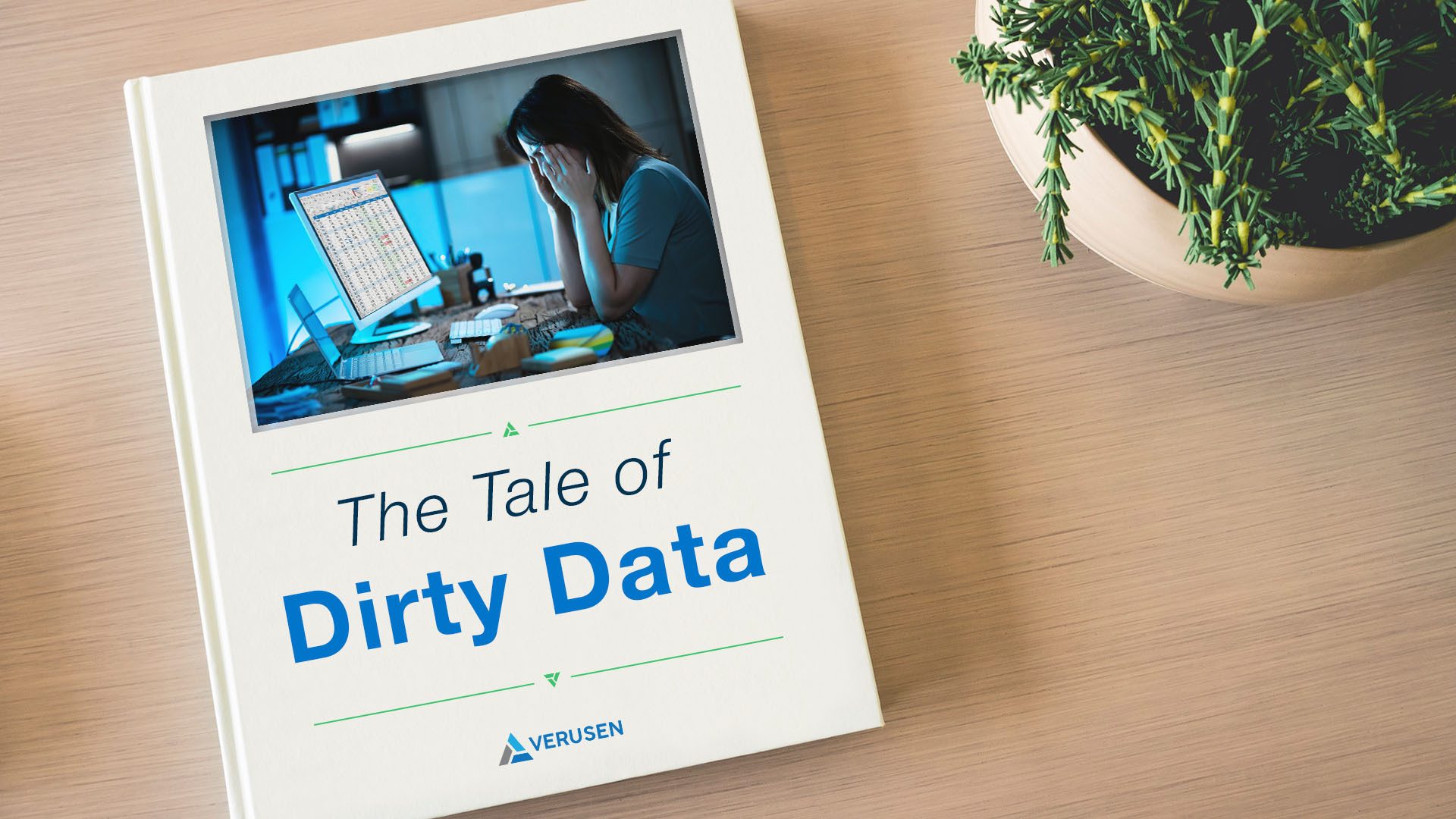Stop Telling the Dirty Data Story


The story’s not new. There’s a saying in literature that if you were to look at every story ever written, break them down to their basic components, they pretty much tell the same story over again – star-crossed lovers, the hero’s quest, a stranger in the village – you get the idea. The same is true with your enterprise data.
As a global manufacturer, you understand the vast complexity of your operations. The different roles and responsibilities across numerous departments, all working diligently towards a common goal of continued growth and sustained customer loyalty. The ever-growing tech stack housing endless data streams that hopefully tell you what’s needed, where it should go, when it should be there, in order to justify the “why.” But the dirty data slows progress like an anchor dragging across the seafloor.
You’ve likely experienced numerous mergers and acquisitions over the years as your business sought to expand its offerings. Perhaps you were directly involved in some of the transactions, perhaps you were the ones acquired. Regardless, you realize that every time you add a new business unit or a new company into the organization’s portfolio, additional layers of complexity come with it.
Unfortunately, M&As don’t fall into place like puzzle pieces; initial comparisons would look more like sticks connected with bubble gum. And that newly attached stick has its own processes, supplier base, tech stack, and data. This continues to drive their operations, even within the new enterprise umbrella. Procurement efforts broaden, budgets climb, materials duplicate, working capital gets wasted, and the data gets dirtier and dirtier.
Things will go on this way until a migration initiative surfaces, usually involving a costly ERP, to hopefully harmonize all the disparate systems. But this can take years, if it ever happens at all. Manufacturing continues as usual, until someone decides it’s time to tell the dirty data story.
Except this time it’s from a different point of view, a different department, a different director or executive. But it’s still the same story; it contains the same bad actors as the previous version, and the same protagonist is charged with completing the quest. So what do you do? You follow the plot, just as you did last time. You decide to fight the dirty data with a data cleanse.
In comes the highly respected consulting team to quell your fears with affirmations of understanding your business model, years of experience, and a brand no one can deny. They swear allegiance to comb through your data, strike down the outliers, slay the anomalies, and put to rest the erroneous inputs. And this battle will only take 12-18 months to hand you the fresh, clean data you need.
Do you shut down the factories for 12-18 months? Do you close the doors of your enterprise for a year and a half? Of course not! Production keeps humming, 18 months roll by, you turn to see your smiling consultant team rushing in to deliver the clean data. “Yay!” you exclaim. “The dirty data has been slain! We get to start anew!”
Only it hasn’t and you don’t. The data cleanse fixed existing issues while your business added a year and a half of more terrible data on top, soiling the consulting efforts. The “clean” data you’ve just been handed no longer applies to your business. It’s outdated. It’s old. Just like your dirty data story. What you’ve really been given is a very big bill for yet another useless data cleanse project. It’s not the resolution you hoped your story would have, but it’s the one you should have known you would get.
So now you’re faced with two options; a fork in the road if you will. The first, which most organizations take, is where you eat the bill, trudge forward, and after another three to five years pass, walk into the meeting, and tell the same sad, dirty data story yet again. Only this time it’s a new set of executives because the last group didn’t survive the failed data cleanse initiative.
The second, often the road not taken, is where you invest in a technology purposely built for enterprise data and for this problem. One that doesn’t require long implementation, doesn’t require a complete overhaul of your enterprise data management systems, doesn’t require a third party’s expensive time. It plugs and plays using the dirty data you already have on hand and harmonizes it. And just like that, you’ve completely rewritten the story.
“Two roads diverged in a wood, and I—
I took the one less traveled by,
And that has made all the difference.”
Does this sound more like the version you’d like to tell going forward? Visit Verusen.com today to learn more about rewriting the story and check out our AI and machine learning platform.
